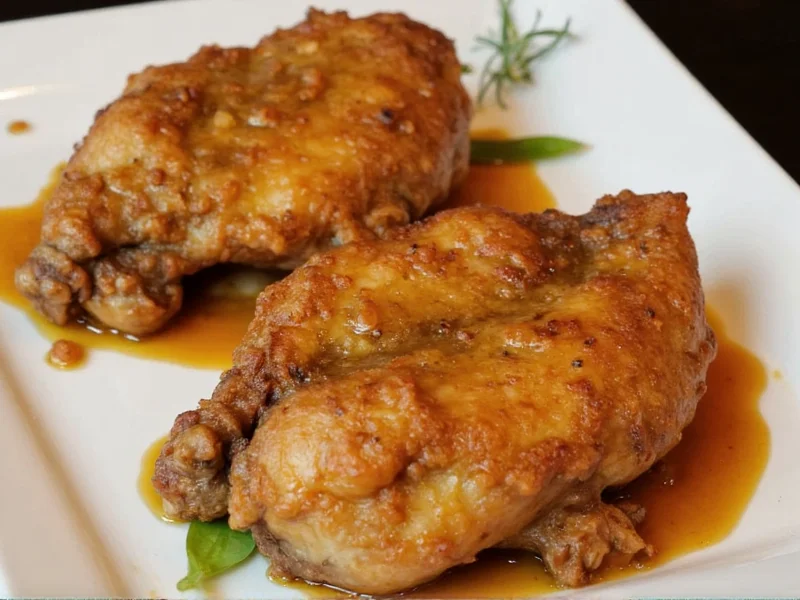The New York Times buttermilk chicken recipe represents one of the most influential fried chicken preparations in modern American cooking. Published in Mark Bittman's How to Cook Everything series, this recipe transformed how home cooks approach fried chicken by prioritizing the chemical properties of buttermilk over complicated spice blends.
The Science Behind the Soak
Buttermilk's mild acidity and natural enzymes work together to tenderize chicken without making it mushy—a common problem with vinegar-based marinades. The lactic acid gently breaks down muscle fibers while the calcium activates enzymes that further tenderize the meat. Unlike many copycat recipes, the NYT version specifies a full 24-hour soak, which allows these processes to work thoroughly without overpowering the chicken's natural flavor.
Essential Ingredients Breakdown
What makes the NYT buttermilk chicken recipe stand out is its minimalist approach. The ingredient list contains just five core components:
| Ingredient | Function | NYT Specification |
|---|---|---|
| Whole chicken (3-4 lbs) | Protein base | Cut into 8 pieces, skin-on |
| Buttermilk (2 cups) | Tenderizer & flavor carrier | Full-fat, not cultured substitute |
| Flour (2 cups) | Crisp coating foundation | All-purpose, unbleached |
| Salt (1½ tsp) | Flavor enhancer | Kosher salt preferred |
| Pepper (½ tsp) | Subtle heat | Freshly ground black pepper |
Step-by-Step Preparation Guide
Following the NYT buttermilk chicken cooking method precisely yields dramatically better results than improvised versions:
- Prep the chicken: Pat pieces completely dry with paper towels—moisture prevents proper browning
- Marinate: Submerge chicken in buttermilk, refrigerate uncovered for 24 hours (no additional seasonings needed)
- Dredge: Remove chicken from buttermilk, let excess drip off, then coat in seasoned flour mixture
- Rest: Allow coated pieces to sit 15 minutes for crust to hydrate and adhere properly
- Fry: Heat ½ inch vegetable oil to 325°F (163°C), fry in batches for 12-15 minutes until golden brown and internal temperature reaches 165°F
Critical Technique Insights
Professional chefs who've analyzed the NYT buttermilk chicken recipe identify three often-missed elements that make the difference between good and exceptional results:
- The uncovered marinade: Refrigerating the chicken uncovered in buttermilk allows the skin to dry slightly, creating better adhesion for the flour coating
- The double-dip option: For extra-crispy results, Bittman suggests a second buttermilk dip and flour coating after the initial dredge
- Oil temperature control: Maintaining 325°F throughout frying prevents greasy chicken—too hot causes burnt exteriors with raw interiors
Common Mistakes to Avoid
Even experienced cooks make these errors when attempting the NYT buttermilk chicken preparation:
- Reducing the marinade time below 12 hours (the full 24-hour soak delivers dramatically better texture)
- Adding excessive spices to the buttermilk (overwhelms the delicate tenderizing process)
- Crowding the pan during frying (lowers oil temperature and creates steamed rather than fried chicken)
- Skipping the resting period after dredging (leads to flour wash-off in the oil)
Variations for Modern Kitchens
While purists recommend following the original NYT buttermilk chicken recipe exactly, these tested adaptations accommodate different dietary needs without sacrificing quality:
- Oven method: For a healthier version, bake marinated chicken on a wire rack at 375°F for 45-50 minutes after dredging
- Gluten-free: Substitute rice flour and cornstarch (3:1 ratio) for all-purpose flour with excellent crisp results
- Spice boost: Add 1 tsp cayenne to the flour mixture for Nashville hot chicken variation
- Herb infusion: Stir 2 tbsp chopped fresh thyme into the buttermilk for aromatic complexity
Why This Recipe Endures
The NYT buttermilk chicken recipe has maintained popularity for over two decades because it teaches fundamental cooking principles through a single dish. Unlike trendy recipes that rely on gimmicks, this method demonstrates how understanding food science—protein structure, acid interactions, and Maillard reaction principles—creates reliably excellent results. The minimal ingredient list proves that technique often matters more than complex flavor combinations.
Serving and Storage Recommendations
For optimal enjoyment of your NYT buttermilk fried chicken:
- Rest cooked pieces on a wire rack, not paper towels, to maintain crispness
- Serve immediately with hot sauce and pickles—the classic Southern accompaniment
- Store leftovers in a paper bag in the refrigerator (not plastic, which traps moisture)
- Reheat in a 350°F oven for 10-12 minutes to restore crispness better than microwave methods
Frequently Asked Questions
- Can I use cultured buttermilk substitute for the NYT buttermilk chicken recipe?
- What's the minimum marination time for acceptable results?
- Why does the NYT recipe use minimal seasoning in the buttermilk?
- How can I tell when the oil temperature is correct without a thermometer?
- Does the NYT buttermilk chicken recipe work with boneless pieces?











 浙公网安备
33010002000092号
浙公网安备
33010002000092号 浙B2-20120091-4
浙B2-20120091-4